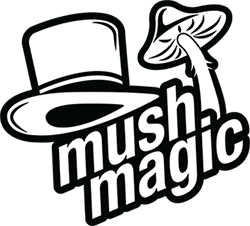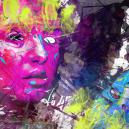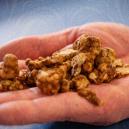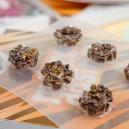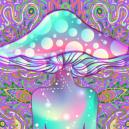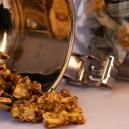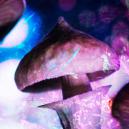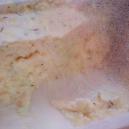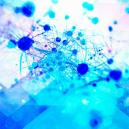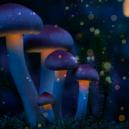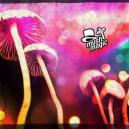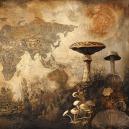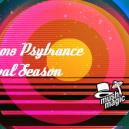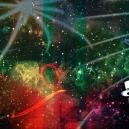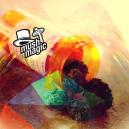What Are Hallucinations?
Published :
December 4th, 2017
Categories :
Default
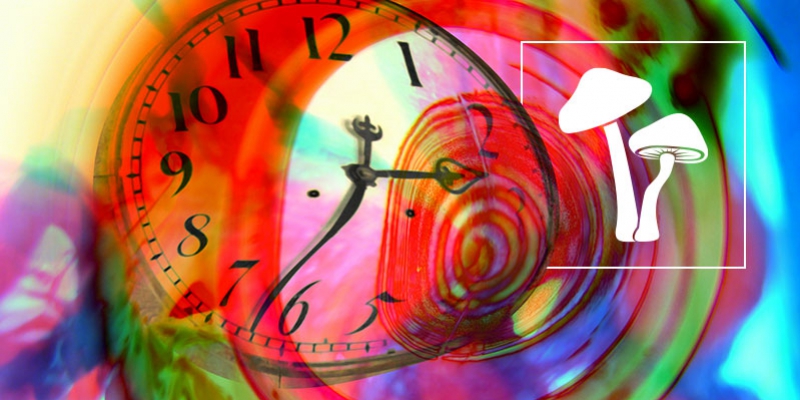
This article explores hallucinations as complex experiences that are caused by various factors, such as mental health issues, sleep deprivation, specific foods, and drugs. Discover all you need to know about what they are, their origins, how they impact our brain, and whether hallucinations should be embraced or avoided.
You've likely heard about hallucinations before, and if you've found yourself on this page, chances are you've either experienced them or are curious to do so. Join us as we explore the bizarre world of hallucinations, a realm where the boundaries between reality and imagination blur.
WHAT ACTUALLY ARE HALLUCINATIONS?
Over the past two centuries, our understanding of hallucinations has evolved substantially from **Esquirol's initial definition, which characterised them as "the intimate conviction of actually perceiving a sensation for which there is no external object.". Or, in simple terms, seeing, hearing or feeling sensations without anything tangible to cause them. This evolution reflects growing insights into the complexity of the human mind and the nuances of perception.
**Esquirol's initial definition – https://www.ncbi.nlm.nih.gov/pmc/articles/PMC5216859/
Hallucinations can relate to any of the senses—vision, hearing, smell, taste, or touch—and can lead to a diverse range of extraordinary and equally terrifying experiences, from hearing non-existent voices to feeling phantom touch. These phenomena may be induced by psychedelic drugs, but can also arise from various conditions not related to illicit substances, such as mental health disorders, sensory deprivation, neurological complications, or periods of intense stress and fatigue. Even a lack of sleep can cause mild hallucinations.
However, to understand what happens to our brain during this sensory spectacle, it helps to picture the brain as an artist. When we're hallucinating, the brain is painting abstractly on a sheet of paper without referencing the physical world around it. Basically, they are self-generated realities, or bits of reality, that are sometimes as vivid and compelling as the sensory experiences we deal with in our day-to-day lives.
The phenomenon of hallucinations emphasises the intricate interplay between the mind, perception, and the external environment. It challenges our conventional understanding of what it means to experience the world or what reality really is in the first place.
DIFFERENT TYPES OF HALLUCINATIONS
Hallucinations encompass a broad range of experiences across all senses. Check out the different types of hallucinations below.
• Visual Hallucinations: Perhaps the most widely recognised form, visual hallucinations involve seeing things that aren't actually present in the tangible world. These can vary massively in form and complexity—from simple patterns or flashes of light to elaborate, fully formed images, people, and alternative worlds.
• Auditory Hallucinations: As you might have guessed, these are characterised by hearing sounds, music, or voices with no external source. Often linked to psychiatric conditions like schizophrenia, auditory hallucinations can range from harmless to deeply distressing, with voices sometimes engaging directly with the affected individual, providing commentary or commands.
• Olfactory Hallucinations: Less common but no less fascinating, olfactory hallucinations involve smelling odours that don't have a physical source. Yes, indeed! These smells can be pleasant or awful, and everything in between. They may be experienced by individuals with certain neurological conditions, triggered by unusual activation in the brain's olfactory pathways.
• Tactile Hallucinations: This type includes the sensation of physical contact or movement on or beneath the skin when there isn't any in reality. You might have heard of this one during drug education at school—it's often used to scare those interested in taking hallucinogenic substances. A typical example is feeling like insects are crawling under the skin, a condition called formication.
• Gustatory Hallucinations: Among the rarest, gustatory hallucinations involve tasting something for which there is no external source.
• Proprioceptive Hallucinations: You might have heard of these in drug education, too—it's why they tell you not to take shrooms near a window or by a cliff. Proprioceptive hallucinations include sensations of floating, flying, or out-of-body experiences and can distort perceptions of body position, movement, and dimension. Individuals may experience sensations of their body changing shape or size and body parts moving beyond their control.
WHAT ISN'T CLASSED AS A HALLUCINATION?
Understanding the distinction between genuine hallucinations and other experiences that don't technically qualify is essential. As mentioned above, hallucinations are defined as a distorted perception in the absence of external stimuli or sources. However, not all unusual sensory experiences fall into this category. For instance, sensory distortions or illusions—where there is an actual external stimulus, but it's perceived in a distorted or exaggerated way—do not count as hallucinations. This can include phenomena such as the bending of straight lines, seeing halos around lights, or misinterpreting noises.
Another common misconception surrounds vivid dreams or daydreams, which aren't classified as hallucinations either. These occur when the mind is in a state of semi-consciousness or imagination, often blending memories, desires, and fears. Similarly, phenomena such as closed-eye visuals, resulting from the brain's natural pattern recognition, are considered an aspect of visual processing rather than a hallucinatory experience.
WHAT HAPPENS IN THE BRAIN WHEN WE HALLUCINATE?
When we hallucinate, the brain goes on a fascinating (or terrifying) journey beyond the spectrum of typical perception. Central to this experience is the phenomenon of **hyperconnectivity, which refers to an increased level of communication between various brain regions. Each section of the brain has its own specialised sensory or cognitive role, and those begin to interact in an intensified and less predictable manner. This disrupts the brain's standard operations, with results such as those mentioned above.
**hyperconnectivity – https://pubmed.ncbi.nlm.nih.gov/24619536/
Also, hallucinations involve significant alterations in the brain's ability to filter and prioritise incoming sensory data. You wouldn't believe how much our brains continuously process what we see, hear, feel and smell. Under normal conditions, the brain carefully sifts through immense amounts of information, putting the non-essential aside to concentrate on the essential stuff.
During hallucinations, this selective attention mechanism ceases to work properly, so the brain mistakenly treats internal thoughts or fantasies as tangible sensory inputs. Plus, neurotransmitter imbalances, especially serotonin and dopamine, exacerbate this, as they also help modulate perception, emotion, and cognition.
Lastly, there can be a notable change in the activity of the brain's default mode network (DMN), a set of regions typically linked to self-referential thinking and mind-wandering. Activation patterns within the DMN can change, which may lead to a more introspective or detached sense of self—something that characterises many hallucinatory experiences.
WHAT CAUSES HALLUCINATIONS?
Now, let's look at the various causes of hallucinations. They can arise from changes in the brain induced by multiple substances, psychiatric conditions, physical states, and even the consumption of specific foods.
DRUGS
The consumption of psychedelic drugs, such as LSD, DMT, psilocybin, or mescaline, is well-known for producing hallucinogenic effects. These substances interact with the brain's chemistry, specifically targeting neurotransmitter systems, dramatically altering perception and leading to vivid, often profound experiences. Stimulants amphetamine and MDMA can also induce hallucinations, particularly at high doses.
Even certain prescription medications, not typically associated with hallucinogenic properties, can have hallucinatory experiences as side effects, especially when you don't use them as directed or when interactions between medications occur.
TRANSIENT DRUG-INDUCED PSYCHOSIS
Transient drug-induced psychosis refers to a temporary state of psychosis triggered by drug use, and its characterising symptoms include hallucinations.
Unlike chronic psychotic disorders such as schizophrenia, transient drug-induced psychosis typically terminates once the drug's effects have worn off. It's crucial to understand the **difference between the temporary nature of drug-induced alterations in brain function versus the longer-term changes associated with mental illnesses.
**difference – https://www.ncbi.nlm.nih.gov/pmc/articles/PMC8732862/
MENTAL ILLNESS
Mental health conditions, notably schizophrenia and bipolar disorder, are the primary causes of hallucinations. These disorders disrupt the brain's usual methods of processing and interpreting sensory data, which can result in distorted perceptions of non-existent phenomena. This influence illustrates how delicate the balance of mental health is in relation to our perception of reality.
LACK OF SLEEP
If persistent, poor sleep quality or outright sleep deprivation can also lead to hallucinations. The brain's operational efficiency is compromised without sufficient rest, which impedes its ability to process sensory input properly. We're not talking about the occasional restless night here or there but rather chronic or protracted sleep issues such as insomnia.
ILLNESS
Infections and diseases also have the potential to induce hallucinations. As they compromise and weaken the body, it can enter a delirious state. These hallucinatory experiences can be truly vivid and surreal, often resembling the disoriented states caused by severe sleep deprivation. As the mind and body deteriorate, the normal processing of sensory information becomes disrupted, leading to chaotic perceptions. It's called a fever dream for a reason.
FOOD
Some foods can induce hallucinations even though they don't contain the traditional psychedelic compounds—it's a fascinating world we live in! A prime example is the fly agaric mushroom, also known as Amanita muscaria. Contrary to popular belief, this mushroom lacks psychedelic alkaloids like those found in psilocybin mushrooms. Instead, the hallucinogenic effects of fly agaric stem from GABA agonists that are present in its toxic skin. Those compounds can cause a delirious state and hallucinations.
ARE HALLUCINATIONS GOOD OR BAD?
Hallucinations are not inherently good or bad. Whether they're a reason for concern or just fun or interesting depends on factors such as the context of their occurrence, the individual's mental health status, whether they are desired, and their underlying causes.
In cases related to physical conditions, psychological disorders, or sleep deprivation, hallucinations typically indicate a disruption in brain functioning or overall health, which means a professional assessment of the situation is called for. In this case, you could argue that hallucinations are definitely a cause for concern.
Intentionally induced hallucinations, on the other hand, triggered by psychedelics like LSD, psilocybin, or mescaline, are different and often have an intentional purpose, including self-discovery, spiritual enlightenment, or therapeutic benefits.
Within controlled environments, psychedelics can unlock profound personal insights and emotional liberation. Keep in mind that using psychedelics carries certain risks. The boundary between beneficial exploration and negative, disorienting experiences is often delicate and easily blurred. Be cautious and handle these substances with the respect they deserve. However, if used sensibly, psychedelics can be vehicles for significant personal and emotional development.
Ultimately, determining whether hallucinations are beneficial or detrimental depends on their specific context. It's crucial to recognise hallucinations' diverse origins and consequences—which this article hopefully has helped with.
